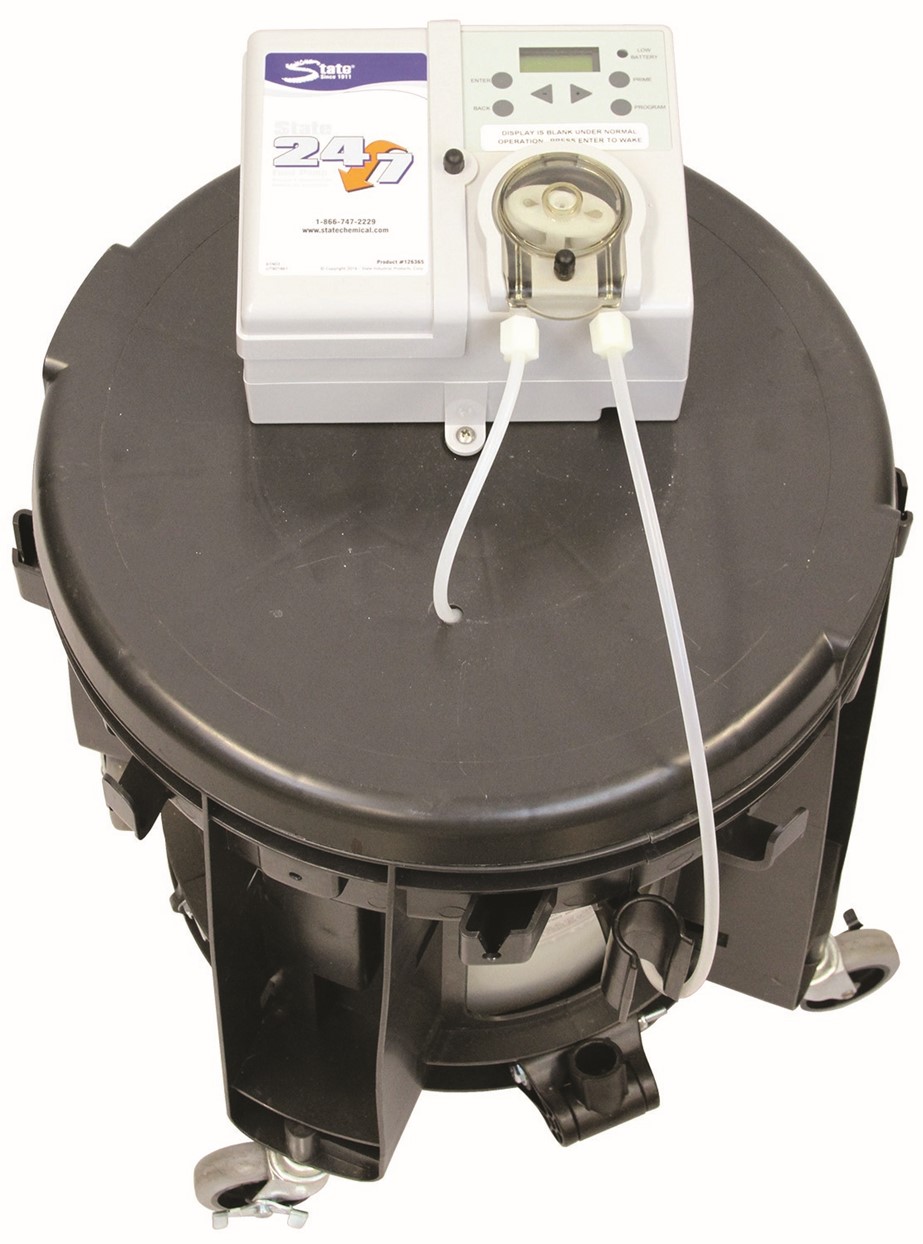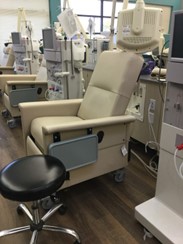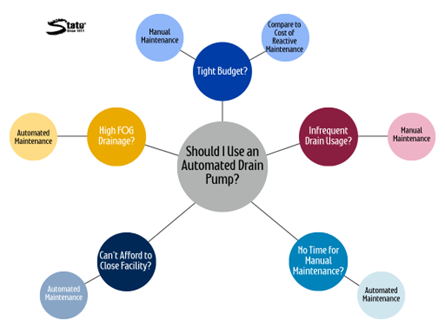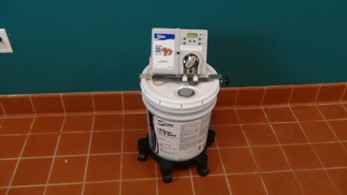What is an Automated Drain Pump?
What is an Automated Drain Pump?
Picture this: you’re the building manager of a dialysis center. It’s a busy facility, and every day, you watch goopy white dialysate slither down the drains. Flies buzz around the sinks, the drains are slowing down, and it’s starting to smell awful. Patients complain of nausea and don’t come back. You try to pour drain maintainers down your drain regularly, but you’re so busy that you don’t consistently have the time. What can you do?
At State Chemical, we manufacture and distribute a variety of chemical solutions, including drain maintainers intended for automated maintenance, like BD-150X. We understand that with the hecticness of running a facility, you don’t always have time for drain maintenance—but we also know that in some situations, facilities simply can’t afford to shut down for drain problems either. Enter automated drain pumps.
To help you explore other possibilities for your facility, we’re going to explain what automated drain pumps are, how they work, when to use them, and when not to use them. After reading, you’ll understand whether automated drain pumps will be able to provide the best drain maintenance for you.
What is an Automated Drain Pump?
Also known as a drain feed pump, an automated drain pump is a computerized pump that regularly feeds a drain maintenance chemical into your drains. This keeps your drains odor-free and clear of buildup, as well as preventing drain flies from invading.
Automated drain pumps work as frequently as you need them to within the week. You can program them to run ten times a day for severe situations, or you can have them run just twice a week if you’re not experiencing as much buildup. It all depends on the individual circumstances.
How Does an Automated Drain Pump Work?
An automated drain pump is connected to a drain maintenance chemical. Through computer programming, the pump regularly dispenses the chemical.
You can program the pump to dispense as frequently or infrequently as you’d like within a week. From there, the chemical will just need to be regularly replaced when it gets low. This will either be done by you or by a chemical company representative. In either situation, it saves you time from having to manually pour chemicals down the drains constantly.
When (and When Not) to Use an Automated Drain Pump
Your specific situation will be the primary deciding factor in getting an automated drain pump. Circumstances where you need a drain pump would be if your facility experiences frequent use and heavy drainage of organics or fats, oils, and greases (FOGs). Additionally, if your facility cannot afford to shut down due to drain problems, automated drain pumps are for you.
Let’s revisit the dialysis center example from earlier. That’s a prime example of a business that would benefit from an automated drain pump. Not only does it experience high drainage of smelly dialysate and other bodily fluids, but it could not afford to shut down if the drains backed up.
A dialysis center shutdown would mean patients could not receive treatment until the issue is resolved. With appointments booked months in advance, this kind of shutdown would severely affect the schedule and patient care.
Now, imagine a hospital. If the drains backed up, the cafeteria would shut down, and the whole hospital would go without food.
It’s easy to see how this could affect a facility that works on a strict timeline. With an automated drain pump, these issues wouldn’t happen in the first place.
However, there are also cases where it just doesn’t make sense to use an automated drain pump.
For example, let’s say that you’re the facilities manager of an office building. This building generally only sees FOG drainage when mugs are washed or the occasional ramen spills at lunchtime.
This is a case where using an automated drain pump just doesn’t make sense. The amount of drain maintenance you’d need would be less than weekly, so it would be best to just manage it manually.
Similarly, if you were dealing with an infrequently used drain, it would make more sense to use treatment for dry drain to control odors. Using an automated drain pump just won’t solve the issue at hand.
Automated Drain Pumps are More Expensive but Save You Long-Term
It’s also important to recognize that automated drain pumps are more expensive than standard drain maintenance. Drain maintenance chemicals are an expense on their own, but with an automated drain pump, you’ll also need to purchase the pumps and pay for their upkeep (i.e., service, batteries, replacements, etc.).
If you’re working on a tight budget, this is important to consider. However, it’s also important to consider how automated drain pumps could save you long-term.
When running a busy facility, working drain maintenance into your schedule isn't always feasible. Automated drain pumps eliminate the potential for forgetting, and their consistency maintains drains more reliably than a person might.
This can save you money in the long term because you won’t have to deal with destructive drain problems.
But it all depends on the situation. You know your circumstances, so consider: do you have the time to manually maintain your drains? Would your facility be better off with guaranteed maintenance?
Compare Automated Drain Maintenance to Manual Drain Maintenance
You’re busy running a facility, so it’s hard to find time to appropriately maintain your drains. Now that you know what an automated drain pump does, consider the differences between automated maintenance and manual maintenance.












